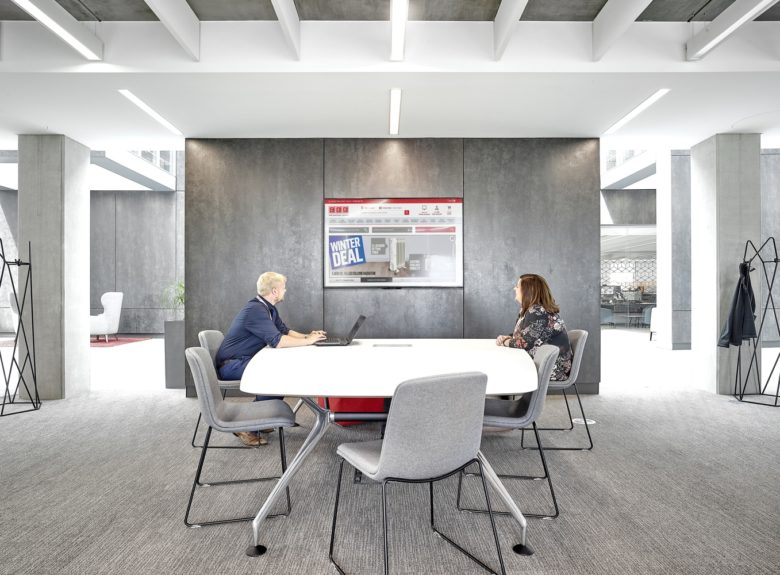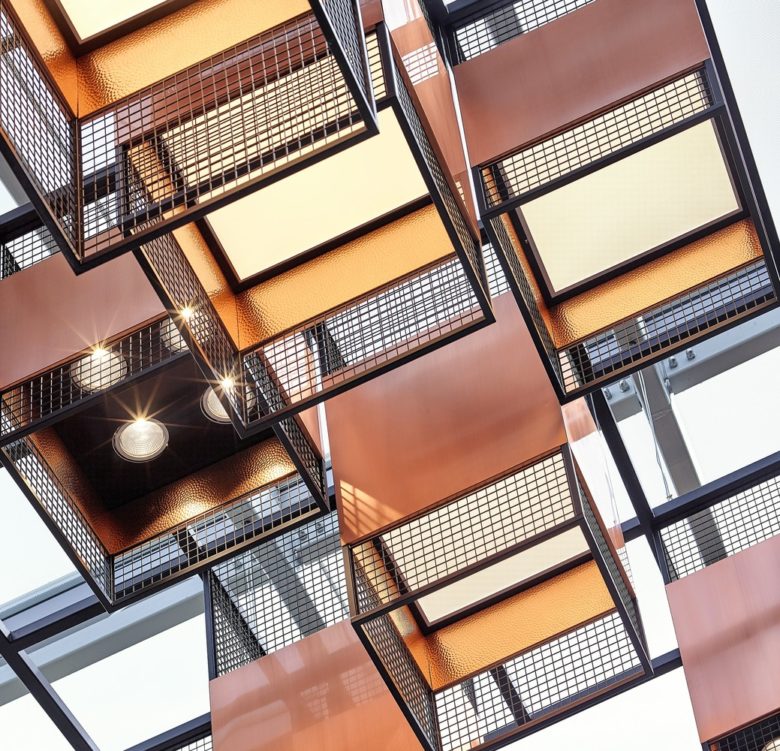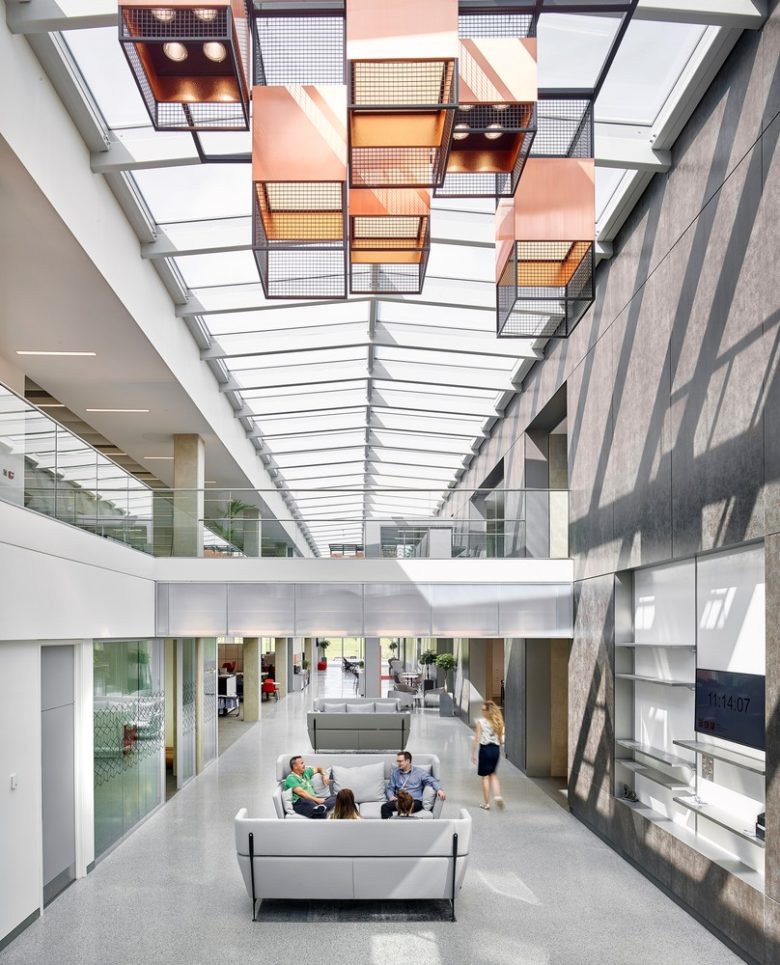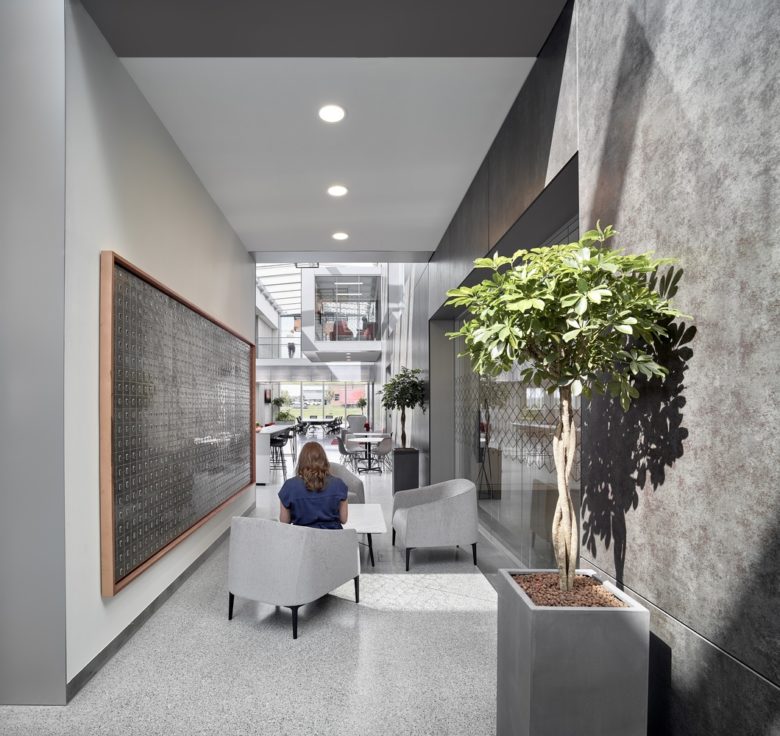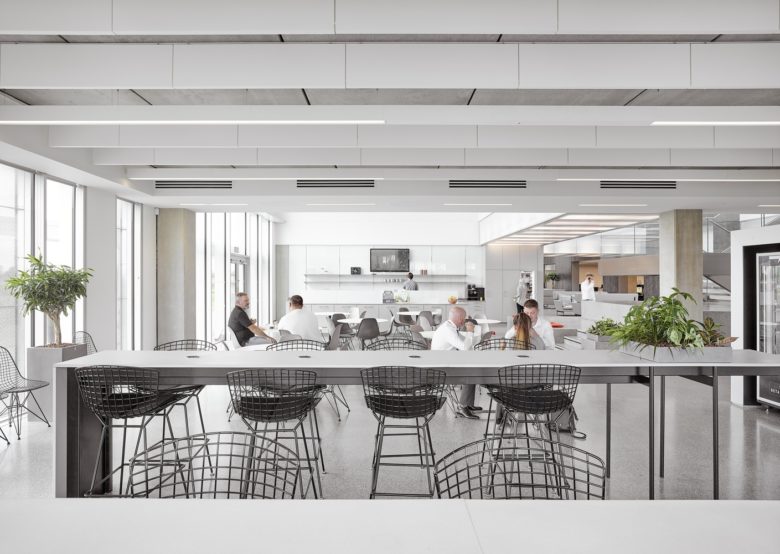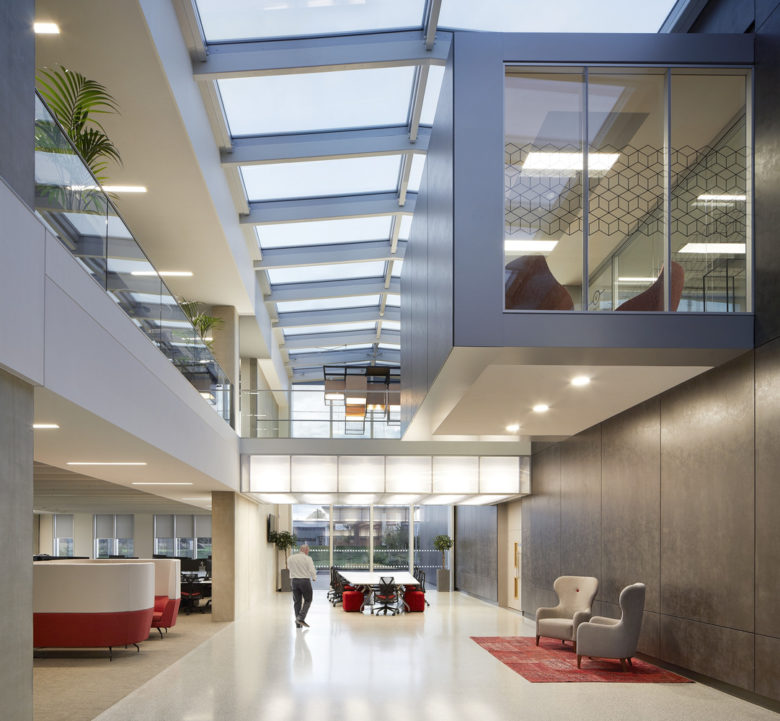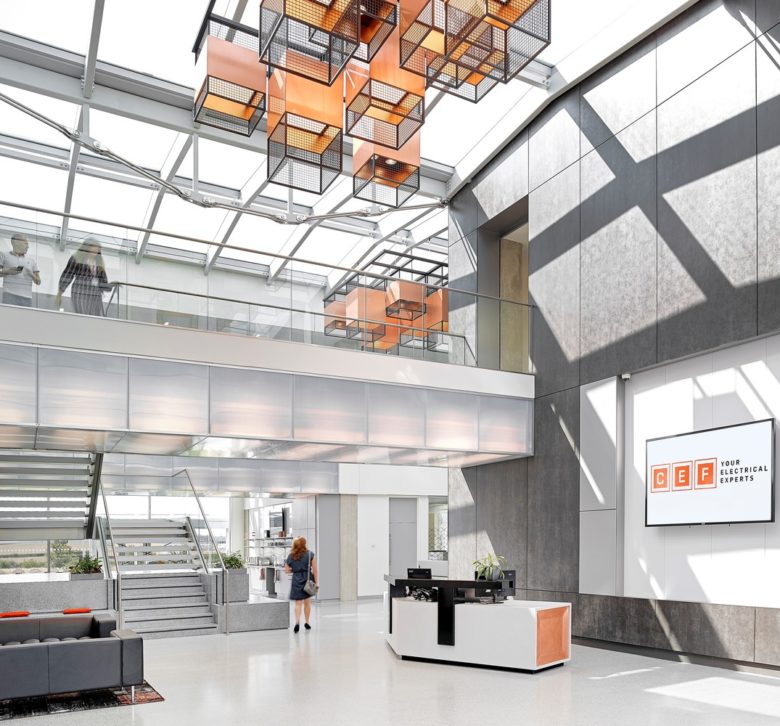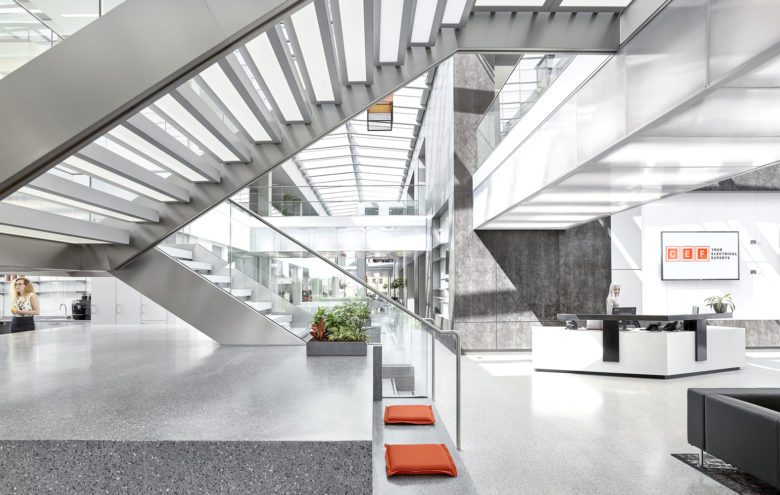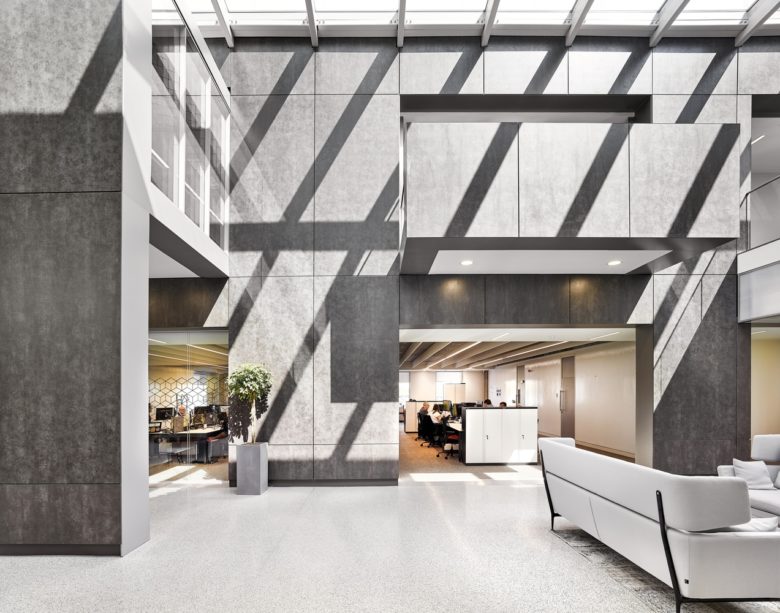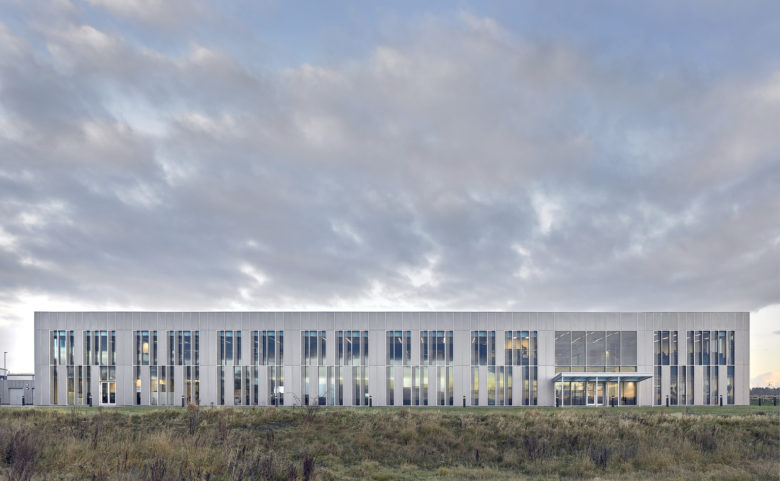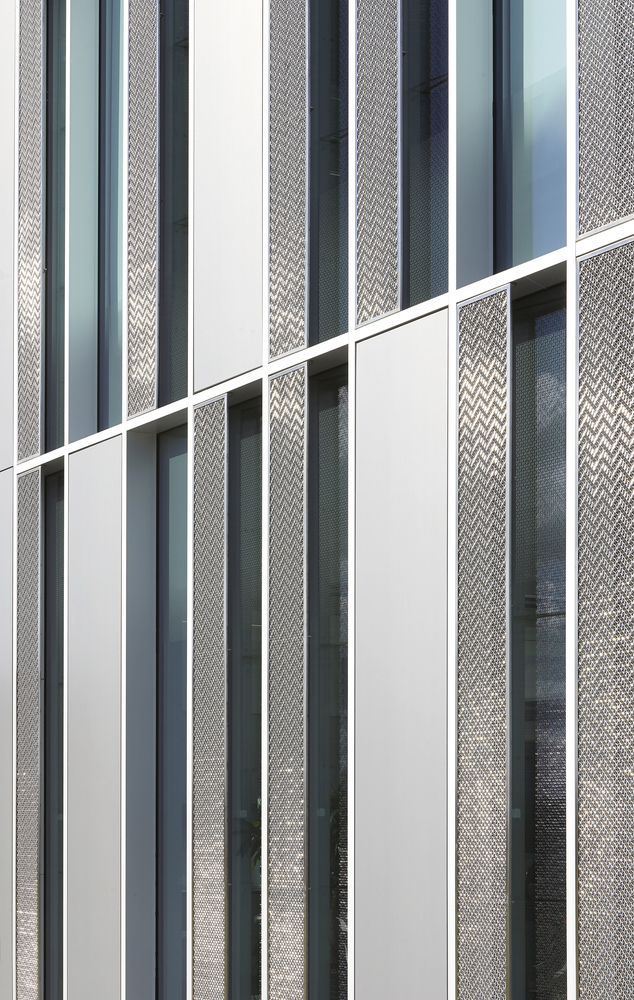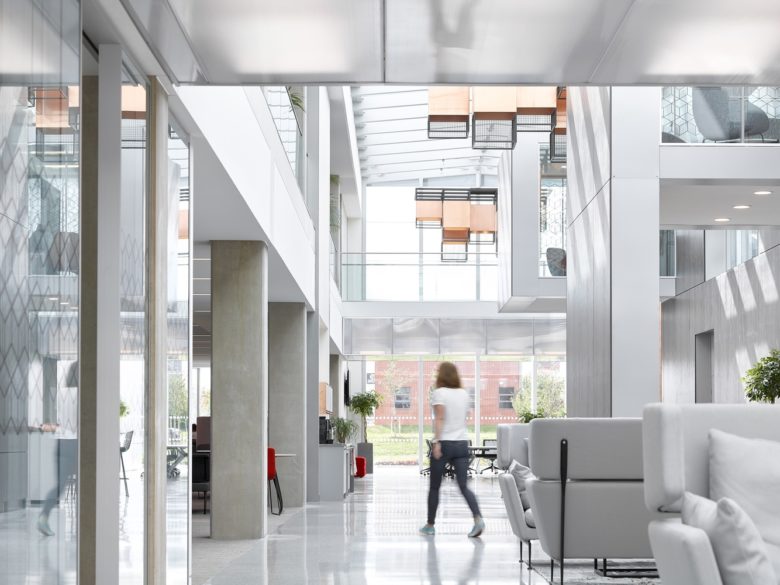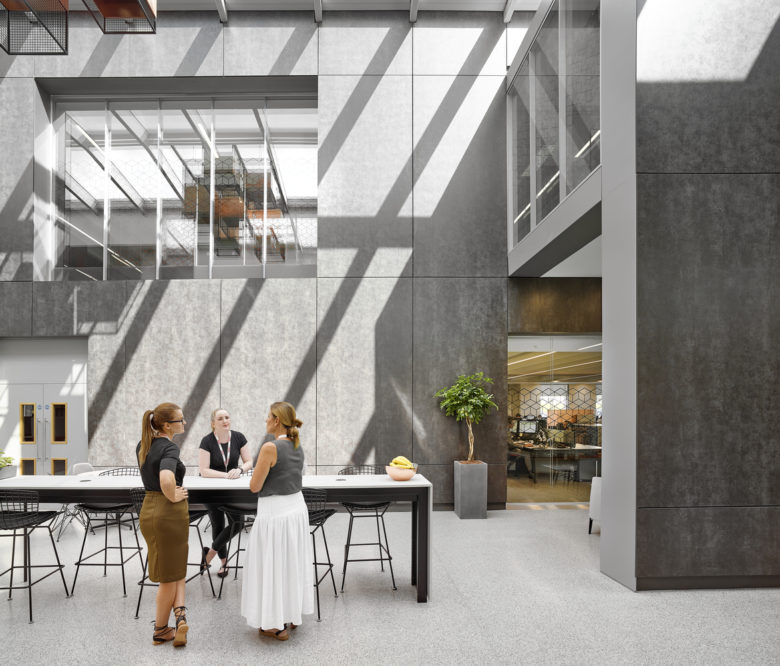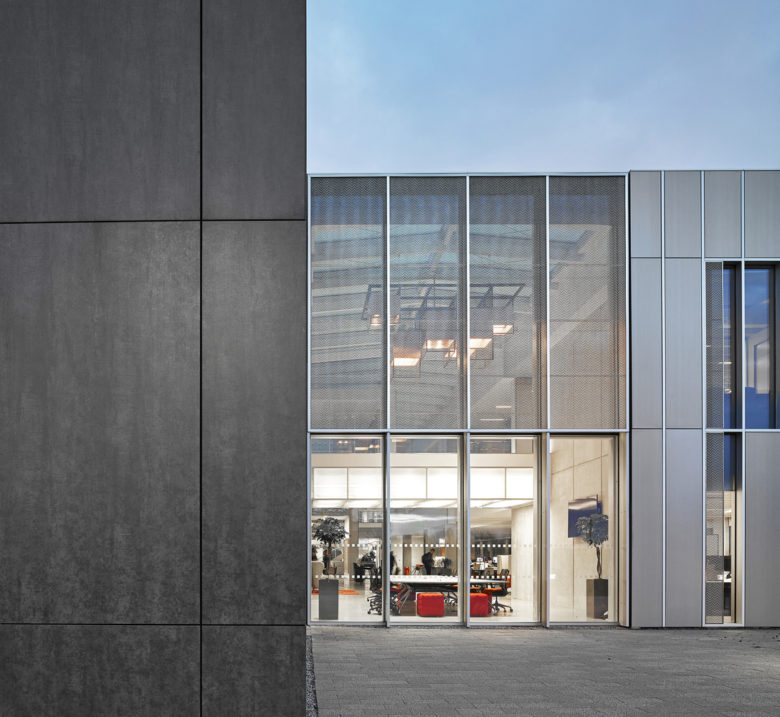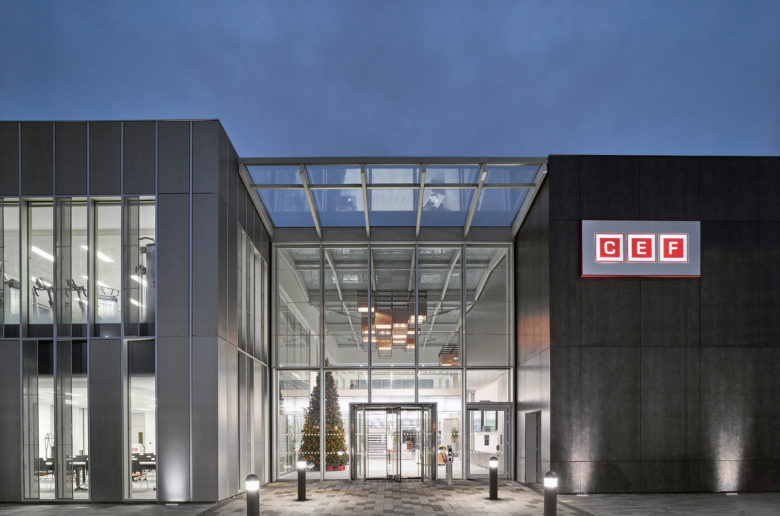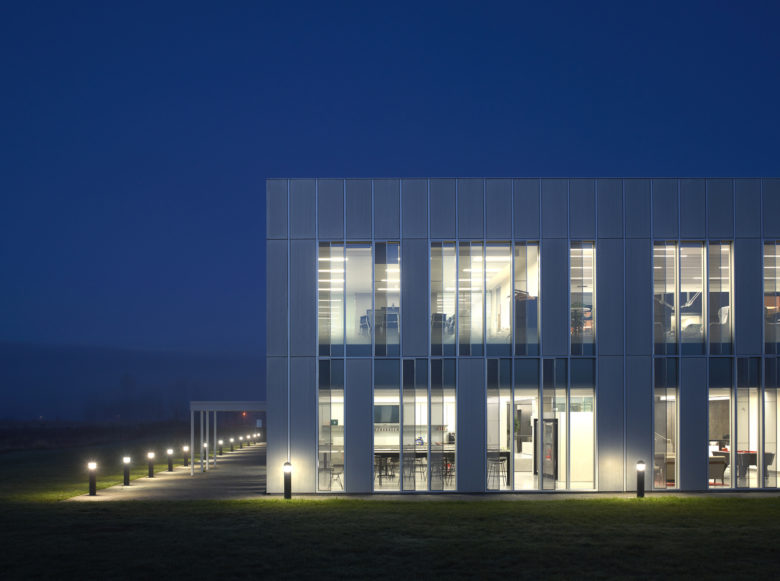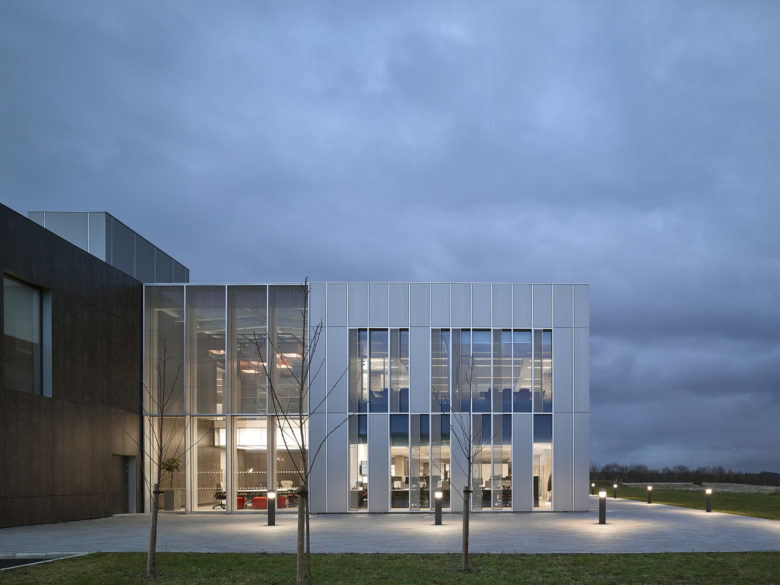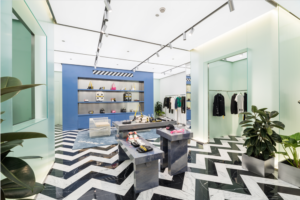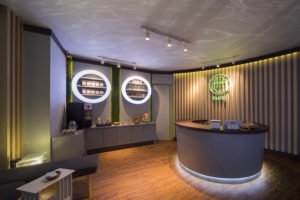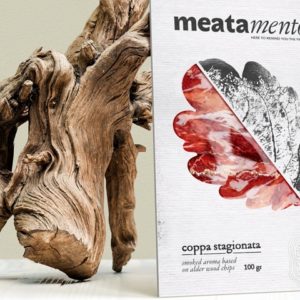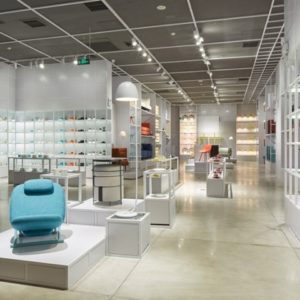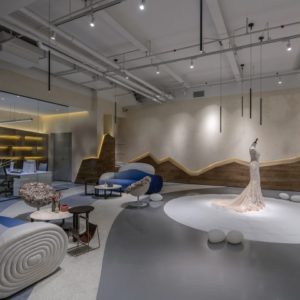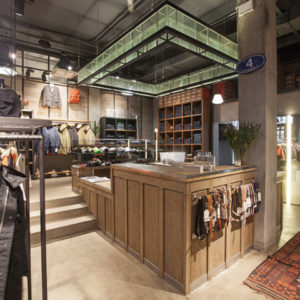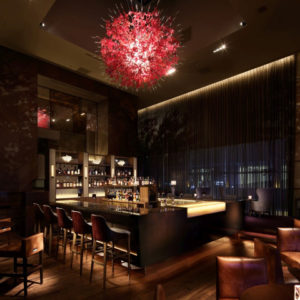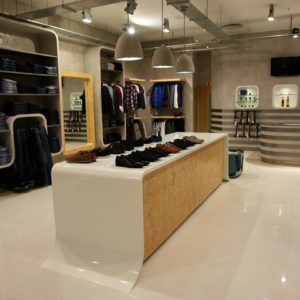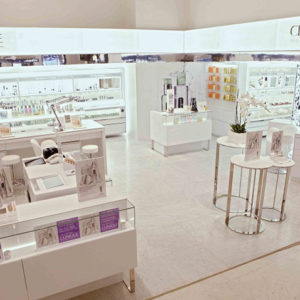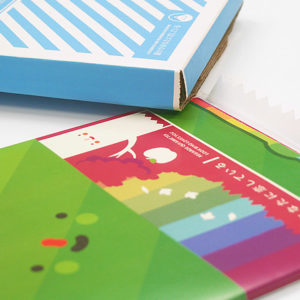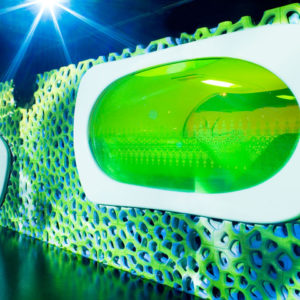
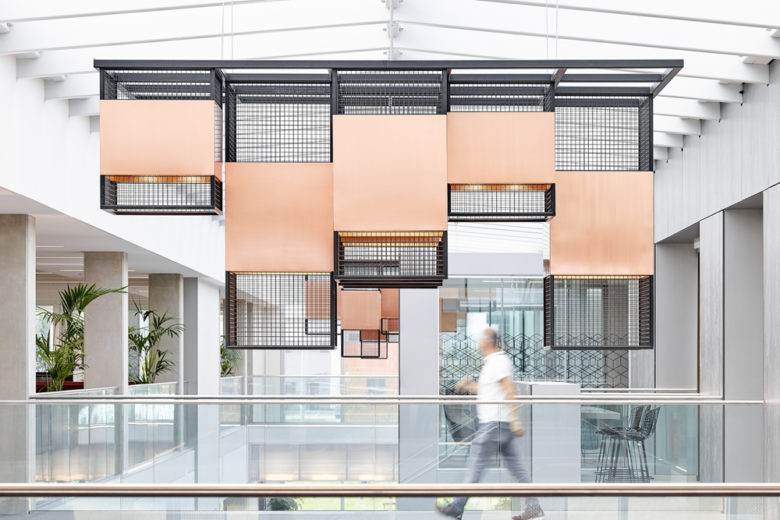
Located in a rich green landscape on the outskirts of Durham, Janet Nash House is the new European IT headquarters for global electrical wholesaler City Electrical Factors (CEF). The building is a fully bespoke workplace solution tailored to the firm’s needs, allowing their employees to communicate more efficiently in an environment that promotes collaboration and wellbeing. The workplace is split into two distinctive areas, providing working environments with unique spatial qualities to support the requirements of different departments. The northern block comprises controlled office environments for the ‘data preparation’ and ‘software development’ teams. These include cellular spaces, specialist workplaces and breakout areas which require a high level of control over access, lighting, privacy and acoustics.
In contrast, the ‘L’ shaped southern workspace—which wraps around a shared central atrium—is an interactive workplace offering a more open, fluid and transient environment to support the creative processes of the ‘graphics and marketing’ team. These two areas are joined together by a fifty two metre long, two storey, glazed atrium which is both a collaborative extension of the workplace and a destination in itself. It offers a series of engaging and interactive breakout spaces and enhanced amenities for all employees, including a café, tea points and games area.
A glowing feature staircase and walkway bridges provide physical connectivity and visual connections across the atrium to promote interaction. The building materials are a physical expression of the layering of components found within the client’s core product – the electrical cable. This design que allows the building to become a visual celebration of CEF’s company ethos and rich industrial heritage. For example, large format porcelain panels are expressed both internally and externally throughout the northern block as a reference to the traditional use of ceramics as an electrical insulation material.
Throughout the atrium, materials such as copper, steel and translucent plastics are elegantly detailed to incorporate CEF products within the many bespoke joinery items, creating a functioning catalogue of their goods. Taking inspiration from CEF’s commitment to employee wellbeing, active design and biophilic design principles were fundamental to the design of the workplace. The prominent feature staircase is located at the entrance to the building. This immediate visual connection promotes active use of the staircase and provides a visual anchor to the shared spaces within the atrium. Amenities such as a fully equipped gym, healthy eating café, outdoor terraces and cycle to work facilities, further promote activity.
Expansive use of glazing and the central positioning of the glazed atrium ensures light permeates through the building, promoting natural circadian rhythms. This is also supported by a colour temperature controlled, LED lighting strategy. The building incorporates several technical design innovations, including the first pre-cast concrete structural system with integrated cooling pipework to achieve a 15m span. This has created an expansive volume of column free office space with energy efficient temperature control. The building façade also incorporates the largest format, 100% recyclable, porcelain cladding tiles to be used anywhere in Europe.
Architects: FaulknerBrowns Architects
Photographs: David Cadzow, Hufton+Crow
